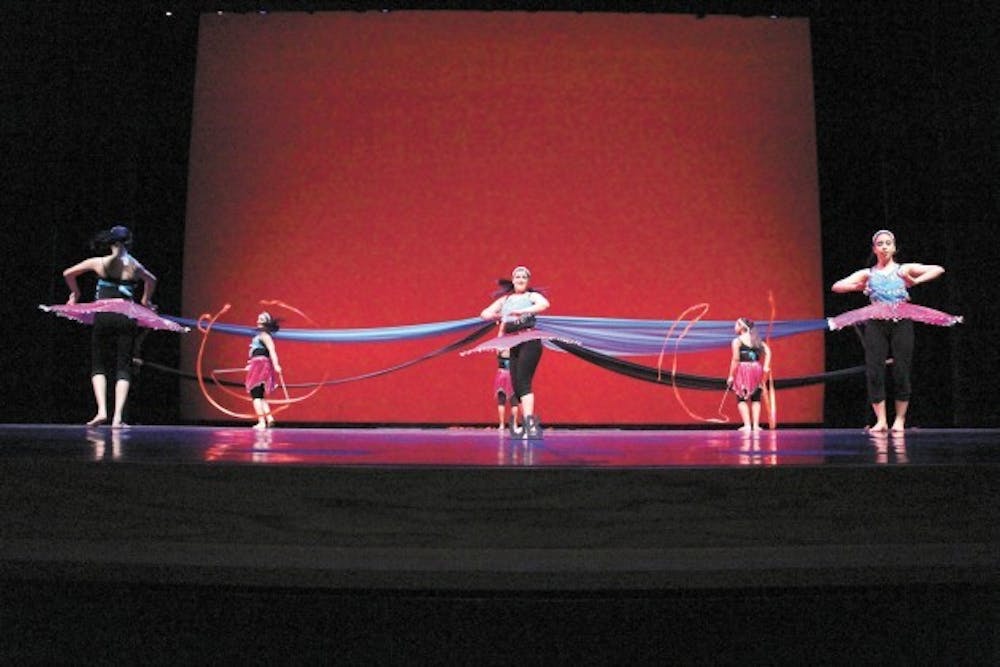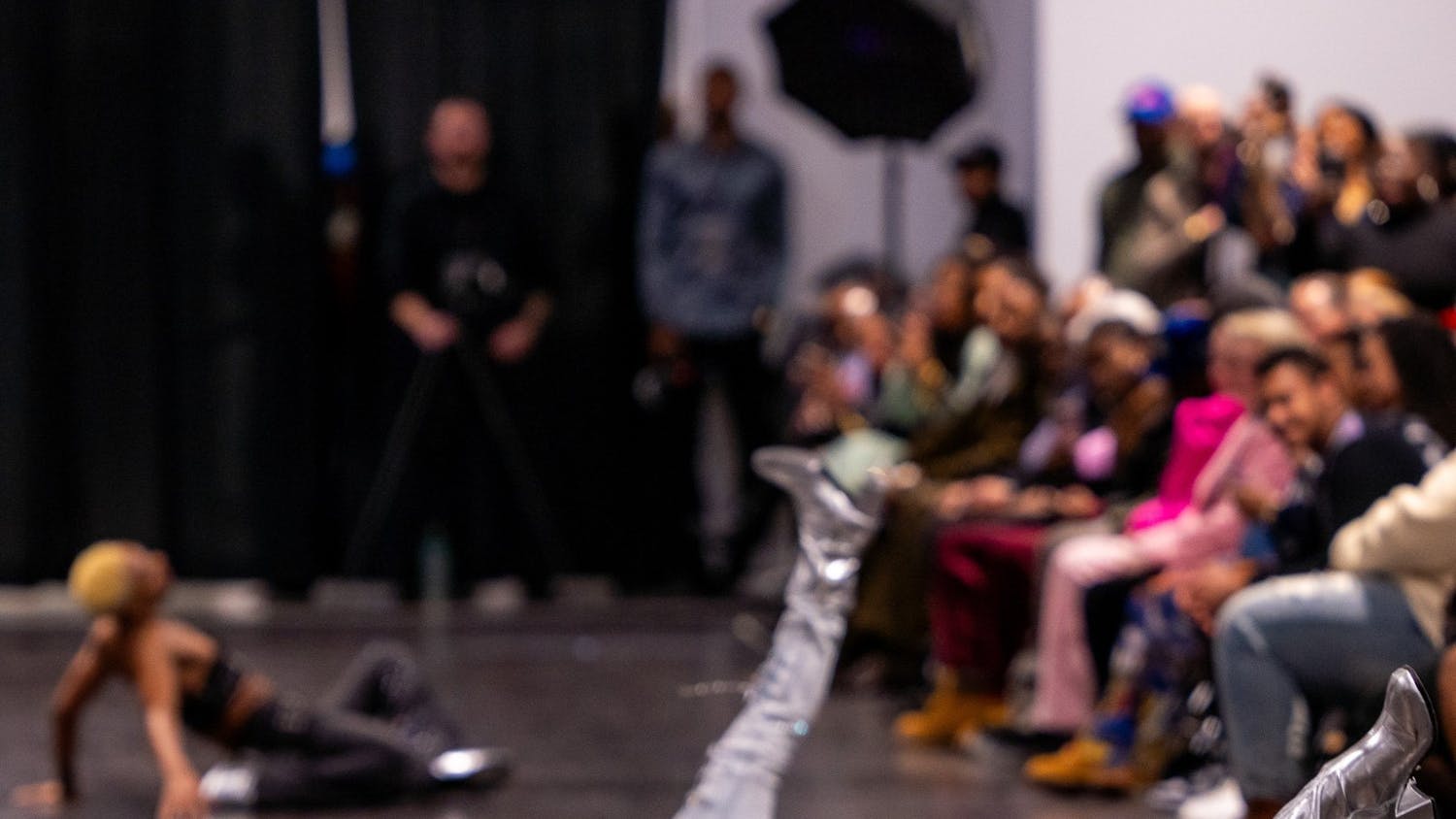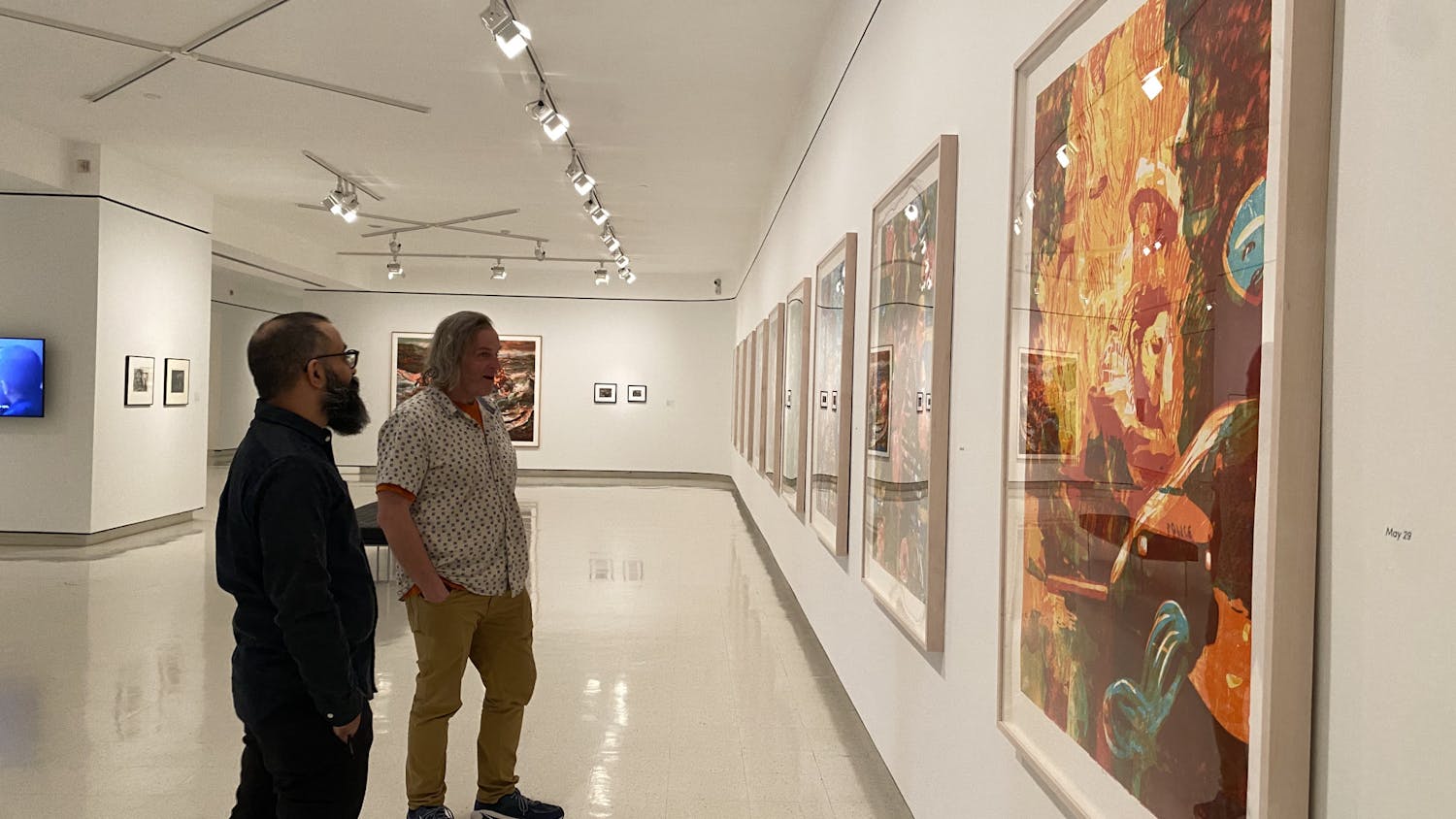Multiple dance battles of good against evil took to the Center For the Arts (CFA) stage on Saturday night in the form of the 20th annual Muqabla competition.
The Indian Student Association hosted 12 teams from schools including Virginia Commonwealth University (VCU), SUNY Binghamton, Cornell University, the University of Connecticut and Boston University. The teams competed in the hopes of winning the trophy and the right to say they are the best Indian dance team.
Each team consisted of 12-18 dancers and competed in one of the three styles of dance - fusion, bhangra or raas. The routines lasted 8-10 minutes and almost every routine found a way to incorporate modern beats and songs with classical or traditional Indian music.
Aside from the dancing, each performance began with a video presentation introducing the dancers and giving the audience an idea of how the routine would incorporate the theme of the night - good vs. evil.
Some teams took their theme further by utilizing plots from popular stories and myths such as Harry Potter, Batman and the seven deadly sins. The fusion team, Binghamton Masti, performed a routine revolving around the story of Snow White, incorporating a cardboard castle, a poison apple and voiceovers in its dance to cue the audience into the storyline.
UB Zeal, the only UB-fusion dance team, won its category with an angel-vs.-devil inspired routine that integrated ribbon twirling, silks, hula-hoops and acrobatics.
Henna Khanijou, a senior psychology major and captain of UB Zeal, felt this win meant more than any other because it was her last Muqabla performance. She was in tears when she grabbed the trophy and held it up for her team.
"Ecstatic doesn't even begin to describe how I feel right now," she said. "We worked our a** off to get here and it's just perfect that we won."
The routine started with a video presentation of team members meeting in an abandoned hallway and initiating a dance battle between the devils and the angels.
The devils wore pink tank tops, and the angels wore similar pink tank tops with short, blue, flowing skirts. Everything was embellished with sequins, beads and small mirrors that reflected the lights on the stage. The men on the team wore all black with a pink or blue sparkling vest to indicate whether they were angels or devils.
Fusion is a combination of the classical styles, Bhangra and Raas, with modern dance styles like hip-hop, jazz and acrobatics.
Judge Alka Moudil's favorite style of dance is Bhangra because "it possesses a certain unique life force."
This was Moudil's eighth year judging Muqabla, and she used to dance when she was in high school and college. Although there were no competitions like Muqabla when she was in school, Moudil encouraged students to dance and loves to watch how the groups' expectations for themselves increase every year.
"I think the dancers like to push themselves, and each year I can tell they do," she said. "I always look for life in the dances along with strong poses, formations and overall grace."
During every Bhangra group, the stage was a rainbow of barefoot pairs jumping, skipping, twirling and kicking to the beat. The loose-fit clothing bounced along with the dancers, allowing the audience to see the fast-paced footwork.
The traditional costumes differ for men and women. Men wear a pagri and turla, a turban and the accompanying fan headpiece. As a top, they wear kurta, a long, flowing shirt underneath a colorful vest and a chaadra - a piece of cloth that's wrapped around the waist like a skirt. The cloth is decorated with beads and sequins.
Women wear a salwar, which are long, baggy pants that are tight at the bottom, and a kameez, a colorful shirt. On their heads is a chunnis, a colorful piece of cloth that wraps around the neck and over the head.
Although the style of dress for all of the Bhangra teams was similar, each team's outfits varied in detail and design.
UB Bhangra, the champion of the Bhangra category, was the crowd's favorite. From the moment the team was announced, the crowd's cheers, chants and applause overpowered the music. At some points, it seemed the 13 dancers were performing to the sound of their fans rather than the music.
The team has been practicing its Muqabla routine for four months, four hours per day, according to Jaskiran Magra, a junior psychology major and dancer for UB Bhangra.
"We are so happy all our hard work paid off and we won this year," she said. "I feel amazing and I'm so proud of our team."
It was hard to tell if the crowd's reaction was causing the winning Bhangra team to exude energy, or if the energy of the dancers was fueling the crowd's applause. Either way, the home team connected with the audience, and that was exactly what Judge Gaitrie Subryan was looking for.
"Energy and entertainment are the two key factors when performing," the first-year judge and 2006 alum said. "It's important to have a connection with the crowd. You're dancing for them, and that's what it's all about."
The winners of the Raas category also captured the audience, although they were not from UB. Ricochet Raas from VCU took first place in their category and overall in the competition. The 12 dancers adopted a Harry Potter theme, in which the girls represented the evil slytherin and the boys were the good Gryffindor.
Raas is the oldest of the styles of dance, dating back to ancient times. Dancers utilize a pair of decorated sticks called dandiyas in their routine - twirling them like batons and clapping them together to the drum beat in the music, according to Indian Arts and Artists' website.
The 12 VCU dancers were in sync with each other from start to finish, banging their dandiyas together and jumping at the same time. The crowd and judges applauded as they lifted one another, showing off their athleticism.
"Each team had their own way of presenting and there really is no perfect way to do it, it's so hard to compare them," said first-year judge Satnam Basra.
The next event at the CFA is the 40th anniversary celebration of the Zodiaque Dance Company on Nov. 17.
email: arts@ubspectrum.com





